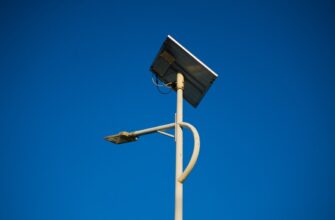Bitcoin airdrops offer exciting opportunities for crypto newcomers to earn free tokens—but navigating the process can be confusing. This guide breaks down exactly how beginners can qualify for BTC airdrops while avoiding scams.
## What Are Bitcoin Airdrops?
Airdrops distribute free cryptocurrency tokens to eligible wallets, typically to promote new projects or reward loyal users. Unlike forks that create new blockchains, BTC airdrops usually involve tokens built on Bitcoin’s ecosystem (like BRC-20 tokens) or partner networks. Projects use them to:
– Boost community engagement
– Decentralize token ownership
– Reward early supporters
## Step-by-Step: How to Qualify for BTC Airdrops
Follow these essential steps to position yourself for legitimate airdrop opportunities:
1. **Set Up a Compatible Wallet**
– Use non-custodial wallets like Trust Wallet, Exodus, or Sparrow Wallet
– Ensure your wallet supports BRC-20 tokens and Bitcoin Layer 2 networks
– NEVER share private keys or seed phrases
2. **Hold Bitcoin in Your Wallet**
– Many airdrops require minimum BTC holdings (e.g., 0.001 BTC)
– Maintain consistent balances—snapshots capture wallet data randomly
3. **Engage with Crypto Communities**
– Join official Telegram/Discord groups of Bitcoin Layer 2 projects
– Follow verified Twitter accounts like @Stacks and @RootstockIO
– Complete simple social tasks: retweets, hashtags, or quizzes
4. **Use Emerging Bitcoin Ecosystems**
– Interact with apps on Bitcoin L2s:
* Stacks (for smart contracts)
* Lightning Network (for payments)
* RSK (DeFi platforms)
– Bridge small amounts of BTC to these networks
5. **Track Airdrop Announcements**
– Monitor aggregators like Airdrops.io and CoinMarketCap Airdrops
– Check project websites and verified social media
– Set Google Alerts for “Bitcoin airdrop” + “BRC-20”
## Top 5 Qualification Requirements
Most legitimate BTC airdrops ask for:
– ✅ Holding minimum BTC in a non-custodial wallet
– ✅ Completing social media tasks (follow/like/share)
– ✅ Interacting with testnets or dApps
– ✅ Signing up for project newsletters
– ✅ Referring friends (bonus entries)
## Avoiding Airdrop Scams: 4 Red Flags
Protect yourself with these precautions:
1. **Never Pay to Participate**
Legit airdrops NEVER ask for payment or private keys.
2. **Verify Official Links**
Check URLs against the project’s official website and social media.
3. **Research the Team**
Anonymous developers = high risk. Look for doxxed founders.
4. **Use Dedicated Wallets**
Create a separate wallet with minimal funds for airdrop activities.
## FAQ: Bitcoin Airdrops for Beginners
### Do I need to pay taxes on BTC airdrops?
Yes—most countries treat airdrops as taxable income at fair market value when received. Consult a tax professional.
### How long does it take to receive airdropped tokens?
Distribution can take weeks to months after qualification ends. Check each project’s timeline.
### Can I qualify using exchange wallets like Coinbase?
No. Exchanges rarely support airdrops. Use self-custody wallets for eligibility.
### Are Bitcoin airdrops profitable?
Values vary wildly—some tokens become valuable (like STX), others fade. Never invest based solely on airdrop hype.
### How often do BTC airdrops happen?
New opportunities emerge weekly, especially around Bitcoin Layer 2 launches. Stay alert but selective.
## Key Takeaway
Qualifying for Bitcoin airdrops requires preparation, vigilance, and active participation. By holding BTC in a secure wallet, engaging with emerging ecosystems, and verifying opportunities, beginners can safely explore this space. Start small, prioritize security, and remember: if an offer seems too good to be true, it probably is.








